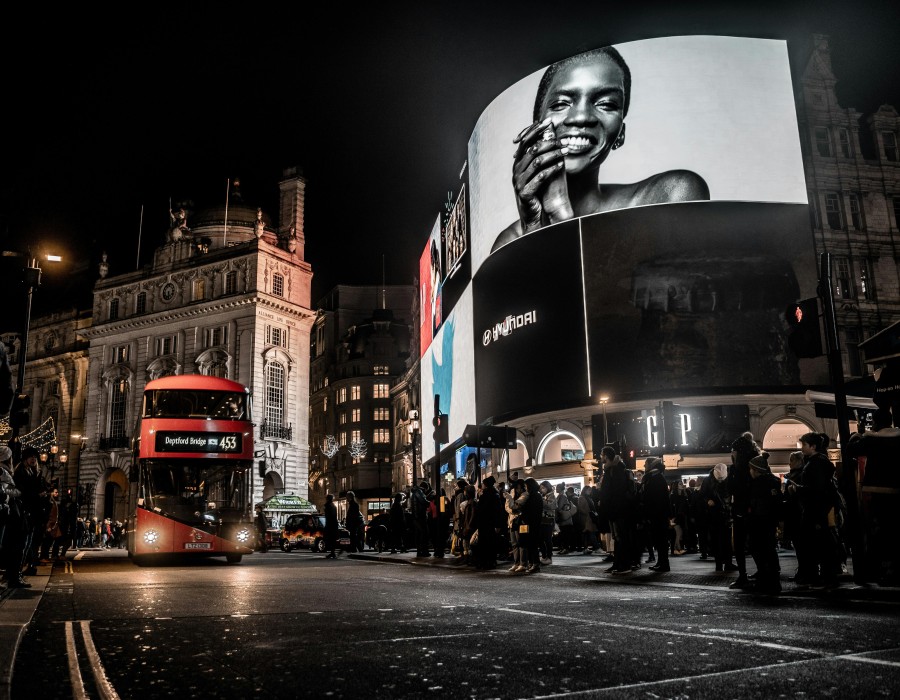Imagine entering your preferred coffee shop, stadium, or movie only to be captivated by a sleek digital screen displaying messages or advertisements just for your setting. By means of in-venue advertising, businesses are interacting with their consumers, ingrained in their everyday lives, and generating immersive experiences. Nowadays, it's not only about commercials; it's about engaging with consumers where they are already spending time.
Transforming Public Spaces
Public places, including transport stations, gyms, and malls, are no longer only places for shopping, working out, or getting about. They are becoming dynamic spaces where brands may interact with you in meaningful and intimate ways. These days, advertisers grab your attention at the moment by using digital screens, interactive kiosks, and even augmented reality experiences. This change gives public areas more life since adverts mix in your surroundings. For example, you may notice a display highlighting a limited time offer at a neighboring retailer while waiting for your coffee. These commercials improve rather than disrupt your daily schedule. Targeting individuals based on their local location helps marketers establish a feeling of urgency and relevancy that is difficult to achieve through conventional media.
Leveraging Technology
Effective in-venue advertising depends on technology in great part. Modern digital displays are dynamic platforms that change to fit the audience in real-time, not only fixed billboards. Artificial intelligence, cameras, and sensors may assist in customizing adverts depending on the time of day, audience composition, or even the state of the weather. Imagine, for instance, that you are at a fitness center and that a nearby television displays an ad for protein drinks just after your workout. Alternatively, you spot a flash offer on team goods during halftime in a stadium. These commercials seem less invasive as they reflect your possible perspective already. Combining modern display technology with data analytics can help companies make sure their messaging speaks to the correct audience at the correct moment.
Creating Memorable Experiences
The days of commercials mostly promoting a good are long gone. In-venue advertising today emphasizes designing events that linger long beyond the venue. Imagine strolling through an airport and coming upon an interactive art piece funded by a travel agency or pop-up virtual reality station advertising a new video game. Anyone who engages with these projects will always remember how public areas become creative playgrounds. Brands may establish closer relationships with their audience by emphasizing involvement over hard-selling strategies. You experience part of the tale, not only view the advertisement. And that emotional link increases your chances of later brand recall and interaction.
Boosting Brand Recall
The way in-venue advertising consistently exposes a brand message helps to reinforce it, which is one of its most powerful features. Unlike one-time, forget-about commercials, in-venue advertising constantly interacts with you during your trip. Whether it's a continuous campaign connected to a particular place or a set of rotating advertising on digital screens, the repetition helps strengthen the brand in your memory. When you're ready to try something different, for example, you're more likely to remember it if you attend the same gym every week and often see commercials for a new workout app. The way in-venue advertising, such as gas station advertising, consistently exposes a brand message helps to reinforce it, which is one of its most powerful features. This deliberate repetition guarantees that the brand maintains top-of-mind without being intrusive or overbearing.
The Eco-Friendly Advantage
Additionally, driving the trend toward more environmentally friendly marketing strategies is in-venue advertising. Once the campaign finishes, traditional print advertising and physical billboards usually create waste and the need for large resources to create. Conversely, digital in-venue screens provide a cleaner substitute. Brands may lower their environmental impact and keep great degrees of visibility by employing recyclable displays and cutting the demand for real materials. To run these exhibits, some locations are also including renewable energy sources, hence improving their sustainability. This dedication to greener methods might help a company seem more in line with principles for consumers who are environmentalists. Seeing an advertisement in a public place that is both interesting and ecologically conscious lends you even another level of brand respect and confidence.
Conclusion
In-venue advertising redefines your interactions with publicly owned companies. It's about building significant, unforgettable experiences that improve your daily life, not only about pushing items. This strategy guarantees that commercials seem relevant and interesting rather than obtrusive or out of place, whether that means through customized messages, immersive campaigns, or modern technology.





Comments